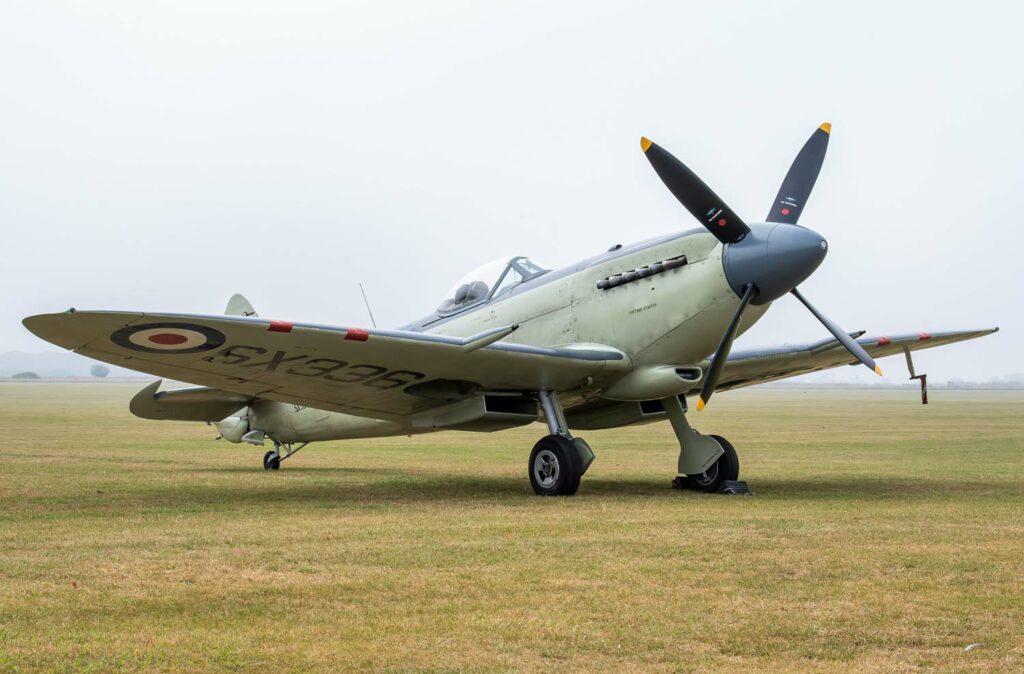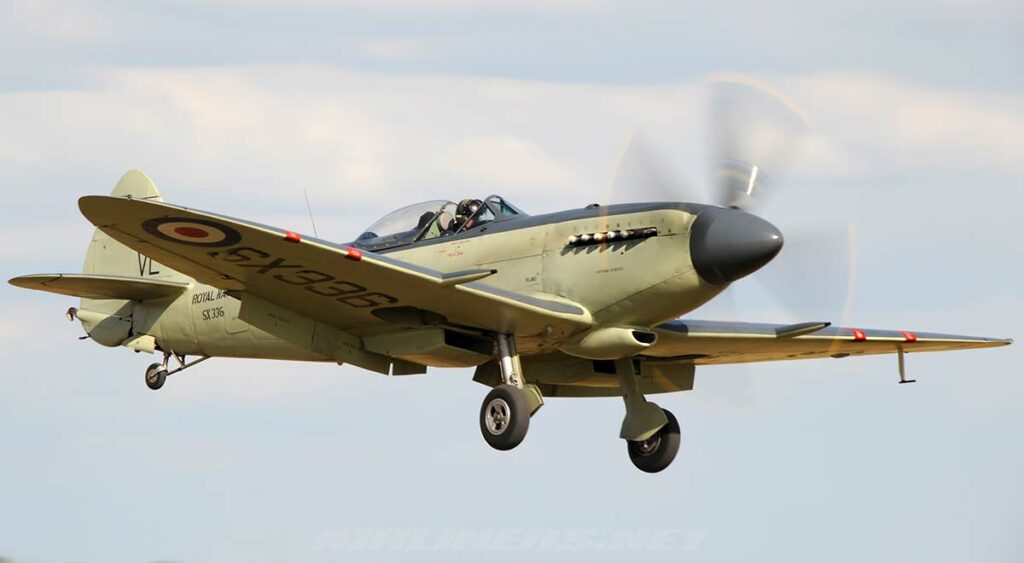The Supermarine Seafire, a naval adaptation of the Spitfire, served as an agile carrier-based fighter during WWII.
This article delves into the Supermarine Seafire, a naval version of the iconic Spitfire, exploring its development, design, performance, and military role. Originating in the pressing needs of WWII, the Seafire was developed to provide the Royal Navy with an effective carrier-based fighter. The article covers the aircraft’s design features, including its adaptations for naval use, and evaluates its performance in various operational parameters. Additionally, it details the Seafire’s combat history, its role in key military operations, and its comparison with contemporaries, concluding with its legacy in naval aviation.
The Supermarine Seafire represents a critical juncture in naval aviation, where the demand for carrier-capable aircraft led to the adaptation of one of the most famous fighters of World War II, the Spitfire. This piece aims to provide a comprehensive understanding of the Seafire’s development, design, operational performance, and its distinguished service history.

History of the Development of the Supermarine Seafire:
The genesis of the Supermarine Seafire was rooted in the tactical necessities of World War II. As naval warfare intensified, the Royal Navy urgently required a competent carrier-based fighter. The Seafire was developed as a navalized version of the Spitfire, a decision influenced by the Spitfire’s proven performance in the Battle of Britain.
The project was initiated by Supermarine, under the direction of R.J. Mitchell, the original designer of the Spitfire. The adaptation process involved significant modifications to enable the aircraft’s operation from aircraft carriers. The Seafire first flew in 1941, a swift response to the Royal Navy’s needs.
The development of the Seafire was a direct response to the changing dynamics of naval warfare, where air superiority was becoming increasingly decisive. The objective was to provide the fleet with an aircraft capable of engaging enemy aircraft effectively and supporting naval operations with its air-to-ground capabilities.
Design of the Supermarine Seafire:
The Seafire’s design was a blend of the Spitfire’s proven airframe and modifications necessary for carrier operations. The aircraft measured 30 feet (9.12 meters) in length with a wingspan of 36.10 feet (11 meters). The most significant change was the incorporation of a reinforced undercarriage to withstand the rigors of carrier landings.
The Seafire was equipped with the iconic Merlin engine in its earlier variants and later with the more powerful Griffon engine. This adaptation provided the necessary power for carrier takeoffs. Additionally, the Seafire featured folding wings, an arrestor hook, and catapult spools, all essential for carrier operations.
While the design allowed the Seafire to operate effectively from carriers, it faced challenges. The narrow undercarriage, while strengthened, was prone to accidents during landings. Furthermore, the cockpit’s placement gave limited visibility for the pilot during carrier approaches.
Performance of the Supermarine Seafire:
Powered initially by the Merlin engine and later by the Griffon, the Seafire’s performance was notable. The Merlin variants produced up to 1,470 horsepower, while the Griffon versions reached up to 2,035 horsepower. This enabled a top speed between 350 mph (563 km/h) and 370 mph (595 km/h), with a service ceiling up to 36,500 feet (11,125 meters) and a range of approximately 385 miles (620 kilometers).
In comparison to its contemporaries, the Seafire held its own in air-to-air combat, especially against German and Italian aircraft. However, its performance was somewhat hampered by the modifications needed for carrier operations, particularly in terms of range and endurance.

Military Use and Combat of the Supermarine Seafire:
The Seafire’s armament typically included two 20mm cannons and four .303 inch machine guns, making it a formidable opponent in air combat. It also carried bombs for ground-attack missions.
During World War II, the Seafire was extensively used in various operations, including the Allied invasion of North Africa, the D-Day landings, and the Pacific theater. Its agility and firepower were advantageous in dogfights and supporting ground troops.
The Seafire faced competition from various Axis fighter aircraft but often proved superior in agility, if not in endurance or ruggedness. After WWII, the Seafire continued to serve in various roles but was eventually phased out in favor of more advanced jet fighters. Its last operational use was with the French Aeronavale, after which it was retired and replaced by more modern aircraft.
The Supermarine Seafire stands as an important chapter in the history of naval aviation. Its development from the Spitfire provided the Royal Navy with a capable carrier-based fighter that played a significant role in various WWII theaters. While it had design limitations, its performance in combat was commendable. The Seafire’s legacy is evident in the evolution of naval aircraft, paving the way for future carrier-based fighters and illustrating the adaptability and innovation in military aviation design.
Back to the Warbirds section.